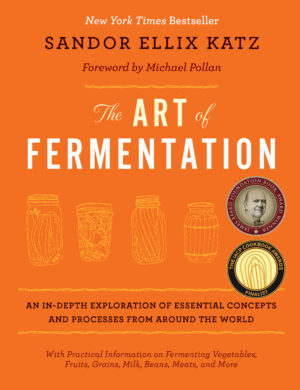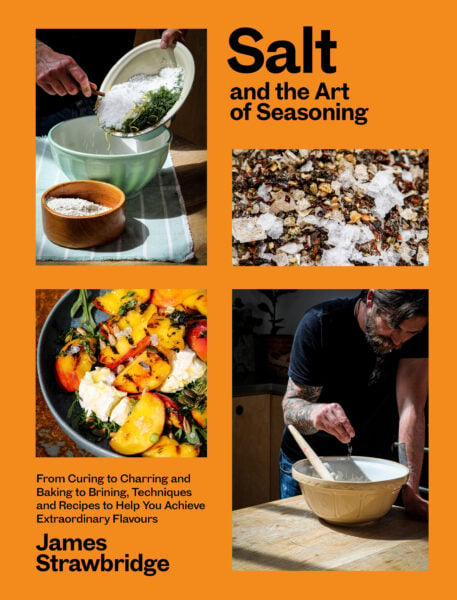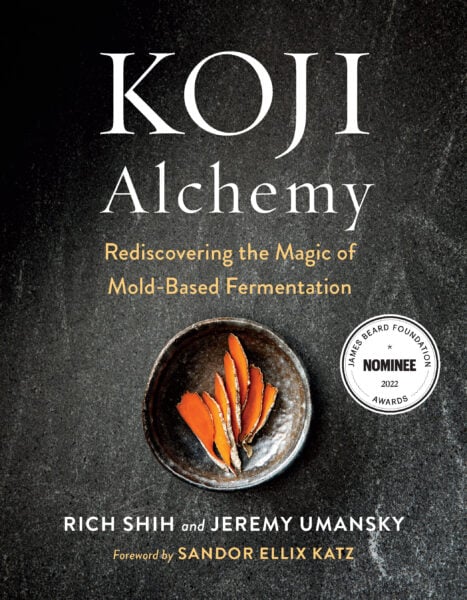Making the Best Sauerkraut on Earth in Four Simple Steps: Chop, Salt, Pack, Wait
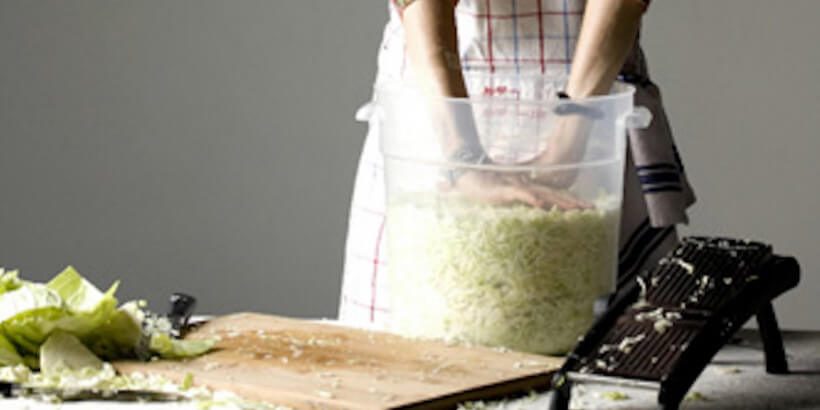
Make your own delicious, healthy, probiotic sauerkraut! Four easy steps are all you need to turn fresh garden veggies into a long-lasting, tangy, pungent condiment.
The following excerpt is from The Art of Fermentation by Sandor Ellix Katz. It has been adapted for the web.
4 Simple Steps to Making Sauerkraut
The English language does not have its own word for fermented vegetables. It would not be inaccurate to describe fermented vegetables as “pickled,” but pickling covers much ground beyond fermentation.
Pickles are anything preserved by acidity. Most contemporary pickles are not fermented at all; instead they rely upon highly acidic vinegar (a product of fermentation), usually heated in order to sterilize vegetables, preserving them by destroying rather than cultivating microorganisms.
“For pickles, fermentation was the primary means of preservation until the 1940s, when direct acidification and pasteurization of cucumber pickles was introduced,” writes Fred Breidt of the USDA.
Vegetable Ferments
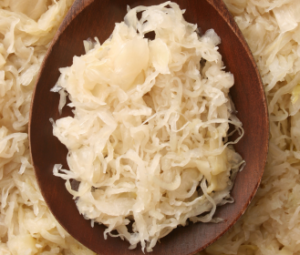 My vegetable ferments are usually concoctions that do not fit any homogeneous traditional ideal of either German sauerkraut or Korean kimchi.
My vegetable ferments are usually concoctions that do not fit any homogeneous traditional ideal of either German sauerkraut or Korean kimchi.
But of course, everything I’ve learned about sauerkraut and kimchi reveal that neither of them constitutes a homogeneous tradition.
They are highly varied, from regional specialties to family secrets.
Nonetheless, certain techniques underlie both (and many other related) traditions, and my practice is a rather free-form application of these basic techniques rather than an attempt to reproduce any particular notion of authenticity.
Steps for Fermenting Vegetables
In a nutshell, the steps I typically follow when I ferment vegetables are:
- Chop or grate vegetables.
- Lightly salt the chopped veggies (add more as necessary to taste), and pound or squeeze until moist; alternatively, soak the veggies in a brine solution for a few hours.
- Pack the vegetables into a jar or other vessel, tightly, so that they are forced below the liquid. Add water, if necessary.
- Wait, taste frequently, and enjoy!
Of course, there is more information and nuance, but really, “Chop, Salt, Pack, Wait” is what most of it amounts to.
Recommended Reads
Recent Articles
Introducing…your new favorite brunch dish! This whole broccoli frittata is packed with fresh, wildcrafted flavors that are bound to help you start your day off on the right foot. The following is an excerpt from The Forager Chef’s Book of Flora by Alan Bergo. It has been adapted for the web. RECIPE: Whole Broccoli Frittata…
Read MoreMany know the effects of catnip on our feline friends, but few realize that catnip has medicinal effects for humans. From stomach aches to reducing fevers, catnip is a versatile herb with many benefits. The next time you grow this plant for your cat you may end up taking a few cuttings for yourself! The…
Read MoreWondering where to forage for greens this spring? Look no further than hedges, which serve as natural havens for wild greens and herbs! The following is an excerpt from Hedgelands by Christopher Hart. It has been adapted for the web. Food from Hedges: Salads and Greens Let’s start by looking at all the wild foods…
Read MoreThere’s a whole new world out there when it comes to koji. It doesn’t matter if you’re making bread, cheese, or ice cream, koji helps you pump up the flavor! Growing Koji in Your Own Kitchen Koji, the microbe behind the delicious, umami flavors of soy sauce, miso, fermented bean sauce, and so many of…
Read MoreWhether you’re looking to replace your end-of-the-day cocktail, relax before bed, or want something new to add to your tea, this non-alcoholic mocktail syrup base will do the trick. Delicious and all-natural, take a sip of this nightcap mocktail and feel your troubles melt away. The following is an excerpt from Herbal Formularies for Health…
Read More

